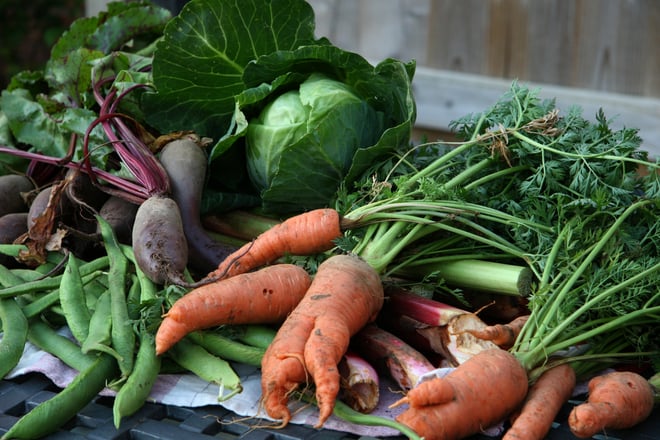Planting a Garden With Your Kids
With the days growing longer and warmer, late spring/early summer is the perfect time to plan a garden.
Vegetables that thrive in the summer growing season include:
- Beans
- Corn
- Cucumber
- Melons
- Okra
- Peppers
- Pumpkins
- Southern peas
- Summer squash
- Sweet potatoes
- Tomatoes
(For more information on which vegetables are great for a summer garden, click here.)
While gardening can take a lifetime to master, it's never too early for children to get involved. Indeed, the cultivation of plant life has something to offer to children who have a creative flair, children who enjoy concrete planning, and everyone in between! Here are just a few ways to invite your children into the wonderful world of gardening!
Starting Seedlings - You don't have to wait until Spring has completely arrived to start growing. You can start cultivating right in your kitchen! Select fifteen to twenty large seeds (Larger seeds are easier to monitoring and tracking growth.) Pumpkin seeds, for example, are an excellent choice. With your children's help, place your seeds between two damp paper towels on a plate. Put the paper plate on a windowsill and have your children water the seeds each day. Remember, you want the paper towels to be damp, not flooded. Keep an eye on the seeds that begin to sprout. When the weather begins to warm and it's clear it won't cool off again until fall, you and your child can take your already sprouted seedlings and plant them in the garden!
Watering Cans - Caring for the plants of your garden is a major component of gardening. Invite your kids to be a part of it by putting them in charge of a task such as regularly watering the garden. Give them their own watering can, and set them loose to make sure no plant goes thirsty. Under your supervision, they'll get a feel for caring for their plants. The more you make it theirs, the more they'll feel connect to the activity.
Seasonal Planning - Any garden can be brightened up with seasonal flowers! Daffodils, tulips, or pansy bulbs can be planted for Spring. Daylilies, coneflowers, and zinnias bloom in Summer. And Fall is a great time for asters, mums, and ornamental grasses. Look up pictures of seasonal plants with your child and decide together what you want to plant. Letting them be part of the decision making process is another way for them to feel ownership of the garden and see how planning today can lead to results tomorrow!
Harvest! - When your vegetables are grown, it's time to harvest! Give a basket to your child and pick out the produce that's ready for the dinner table. This is another great way for them to see the cause and effect of planning a garden. Plus, a vegetable they helped grow is more likely to be a vegetable they'll eat. It's a win-win for gardening and nutrition!
Garden Decoration - You can personalize your garden beyond just what grows in it. Decorative trim and stones are a good addition to sprucing up a garden, but you can work with your children to add even more. Getting some eco-friendly paint and adding color (or pictures!) to those stones is a fun activity to really make that garden your own. Making your own garden decorations (like pin wheels!) is also a fun spring activity. Take a look at other arts and crafts activities for children and ask yourself, "How would that look in our garden?" You might wind up with some fun results!
Beyond the world of fruits and vegetables, gardening helps teach the value of patience, diligence, and planning to your children. They will get to experience firsthand how making a plan and following through can yield real, tangible results. It's satisfying to see what you've worked on succeed. And if something fails to grow, that can be a valuable life lesson as well. So get out there and put those green thumbs to work!
Want more information about gardening with children? See this helpful guide.
Photo Credit: Beverly Lloyd-Roberts
Originally Published 6/6/2016

